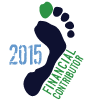Could the following journal article by Matthew Sakiestewa Gilbert lead one to believe that barefoot running might not only be faster than shod running, but also contribute to the longevity of a runner?
Hopi Footraces and American Marathons, 1912–1930, by Matthew Sakiestewa Gilbert
In the following excerpt, he recounts a Hopi tribal race soon after Tewanima's return home from the 1912 Olympic Games where he ran shod
"Seconds before the race began, some of the older Hopi men remarked that the “boys did not look like [Hopi] runners” at all, and teased Zeyouma and Tewanima for wearing their running outfits [did this include them mocking their shoes too?]. A New York Times reporter noted that when Tewanima heard the men’s insults, Tewanima replied, “If you don’t like our looks get in [the race], and show what you can do.” The men promptly accepted his challenge and entered the race with no shoes or track suits, and wore “merely discarded” clothes. Six miles into the race, the older men proved too much for the young runners and Zeyouma and Tewanima quit and left the “race to the barefooted runners in the lead.” Coach Shoulder recalled that the winner was about fifty years old, and he looked like he was “dying of consumption”(tuberculosis).
The outcome of the race provides a telling commentary on running in Hopi culture, as well as the relationship between older and younger runners. While the younger runners migrated to off-reservation Indian boarding schools, the vast majority of the Hopi people, including older men who were known for the ability to run long distances, remained at home. Consequently, some of the best long-distance runners in U.S. history received little or no attention by those outside of the Hopi community. Although newspaper reporters seemed surprised that men in their fifties had the ability to defeat the younger athletes, the people knew that other Hopis could easily outrun the Hopi Olympian and the track star from Sherman Institute.












